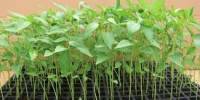Metropolitan agriculture is a concept that describes how to successfully cultivate food in an urban setting. Growing, raising, and producing food and other agricultural goods within or near urban areas is referred to as urban agriculture or city farming. It investigates the connections between topics including sustainability, urbanization, urban agriculture, urban land use policies, and agricultural change. This sort of agriculture occurs in and around cities and urban areas, frequently on small pieces of land.
Description
Because of its ability to handle several difficulties linked with urbanization and food production, metropolitan agriculture has earned increasing attention and popularity in recent years. It provides a conceptual framework for analyzing all of the systems and processes that manifest agriculture in urban regions. This includes distribution, processing, marketing, and consumption in addition to core production.
It is possible to interpret it as drawing on urban systems theory to comprehend the complex ways in which agriculture contributes to, shapes, and is shaped by the process of urban growth. This necessitates a spatial lens that is broader than the immediate urban area, and the term ‘metropolitan’ seeks to convey both a broader spatial limit and a broader conceptual emphasis.
Here are some key aspects of metropolitan agriculture:
- Land Use: It utilizes a variety of spaces within urban environments, including rooftops, vacant lots, community gardens, balconies, and even indoor facilities like vertical farms and hydroponic systems. It optimizes the use of available land and resources in densely populated areas.
- Food Production: The primary goal of metropolitan agriculture is to produce food for urban populations. This can include growing vegetables, fruits, herbs, and even raising animals like chickens, rabbits, or fish for meat and eggs. It contributes to local food production and reduces the need for long-distance transportation of food.
- Sustainability: Metropolitan agriculture often emphasizes sustainable and environmentally friendly practices. It can reduce the carbon footprint associated with food transportation and packaging, promote composting and waste reduction, and use innovative techniques like aquaponics and aeroponics to maximize resource efficiency.
- Community Engagement: Urban agriculture encourages community involvement and engagement. Community gardens and urban farming projects bring people together, promote social cohesion, and provide opportunities for education and skill-building related to agriculture.
- Food Security: It can help to enhance food security in cities by growing food locally. It can help lessen reliance on outside food sources and offer a more consistent supply of fresh, healthy food, particularly in underprivileged or food desert areas.
- Economic Opportunities: It has the potential to generate work opportunities, particularly in places with high unemployment rates. It can also help small enterprises like farmers’ markets and restaurants that use ingredients from urban farms.
- Biodiversity and Green Spaces: Urban farms and gardens can act as green spaces that boost biodiversity and benefit the urban environment as a whole. They provide habitat for pollinators and wildlife, as well as aid in mitigating some of the detrimental effects of urbanization.
Challenges
Limited area, soil contamination, zoning laws, and access to water and resources are significant obstacles for metropolitan agriculture. Overcoming these difficulties frequently necessitates collaboration among government agencies, communities, and organizations. Technological advancements have permitted novel approaches to metropolitan agriculture, such as vertical farming, container gardening, and adaptable hydroponic systems.
In conclusion, metropolitan agriculture is critical to the development of more sustainable, resilient, and inclusive urban food systems. It focuses on food production, environmental sustainability, and community well-being in fast-increasing cities and urban areas.
















